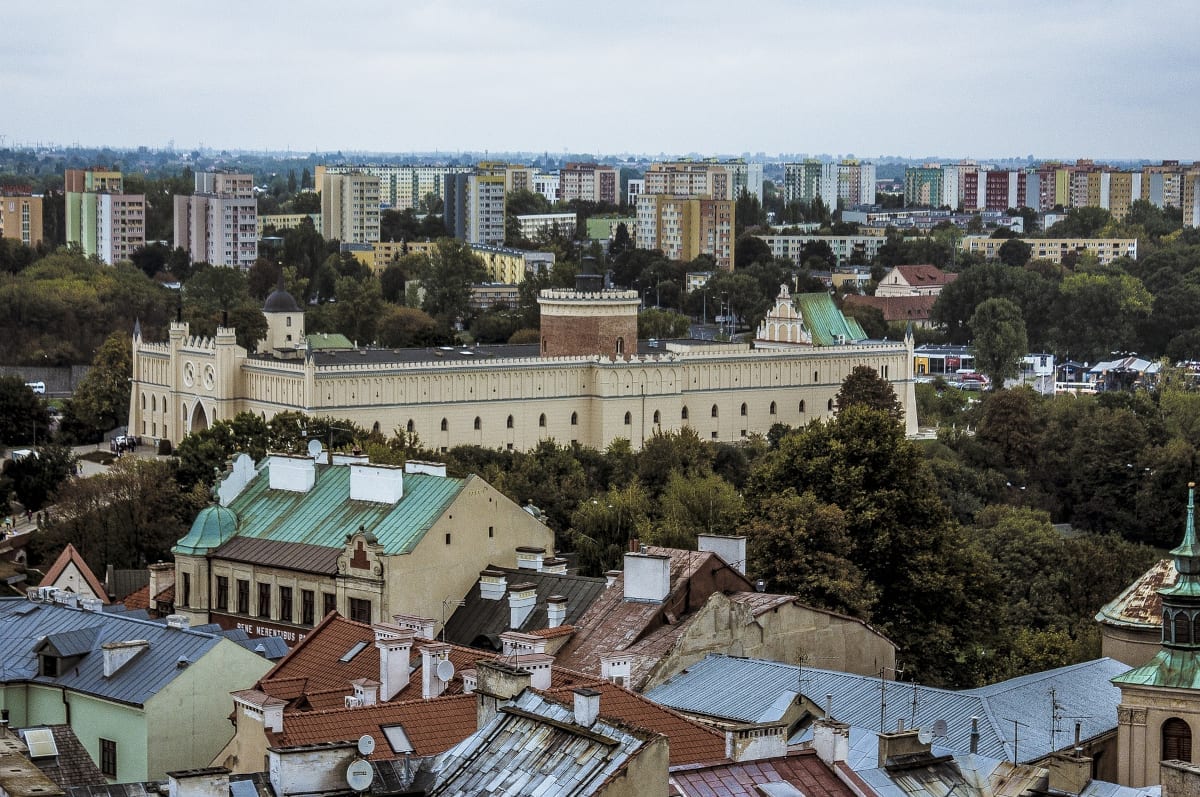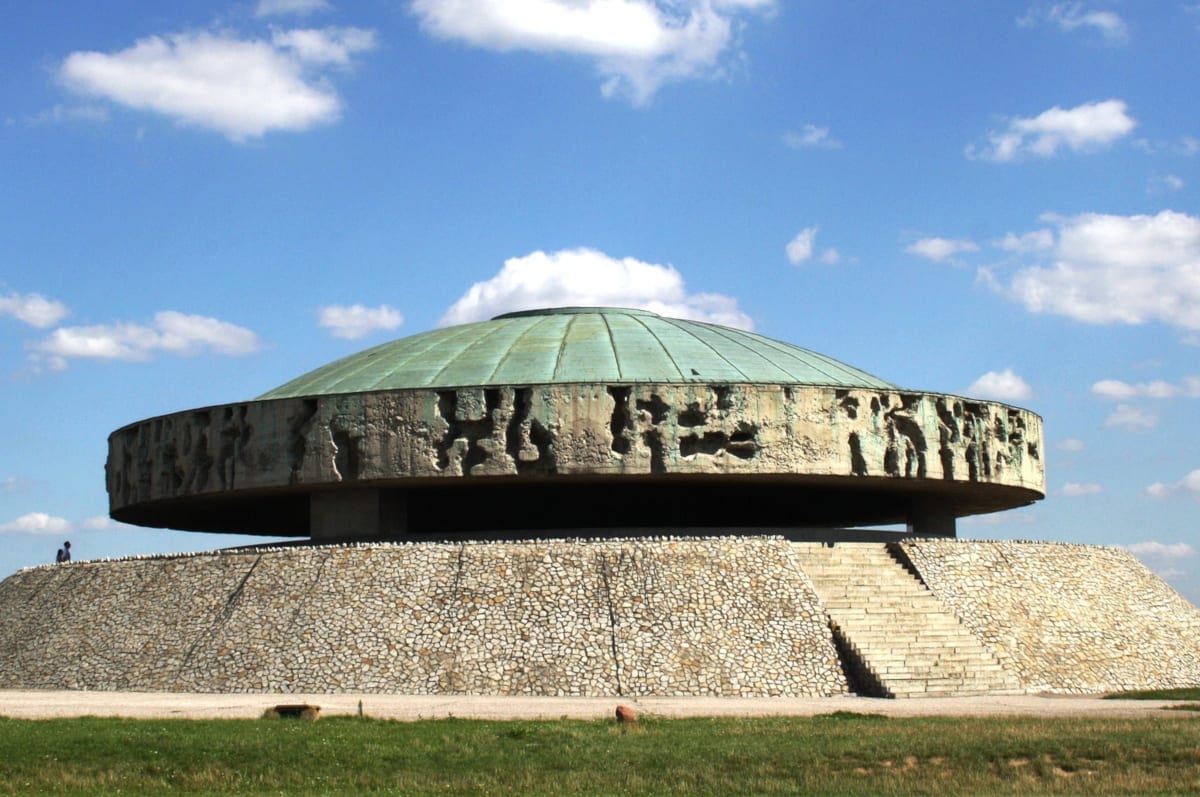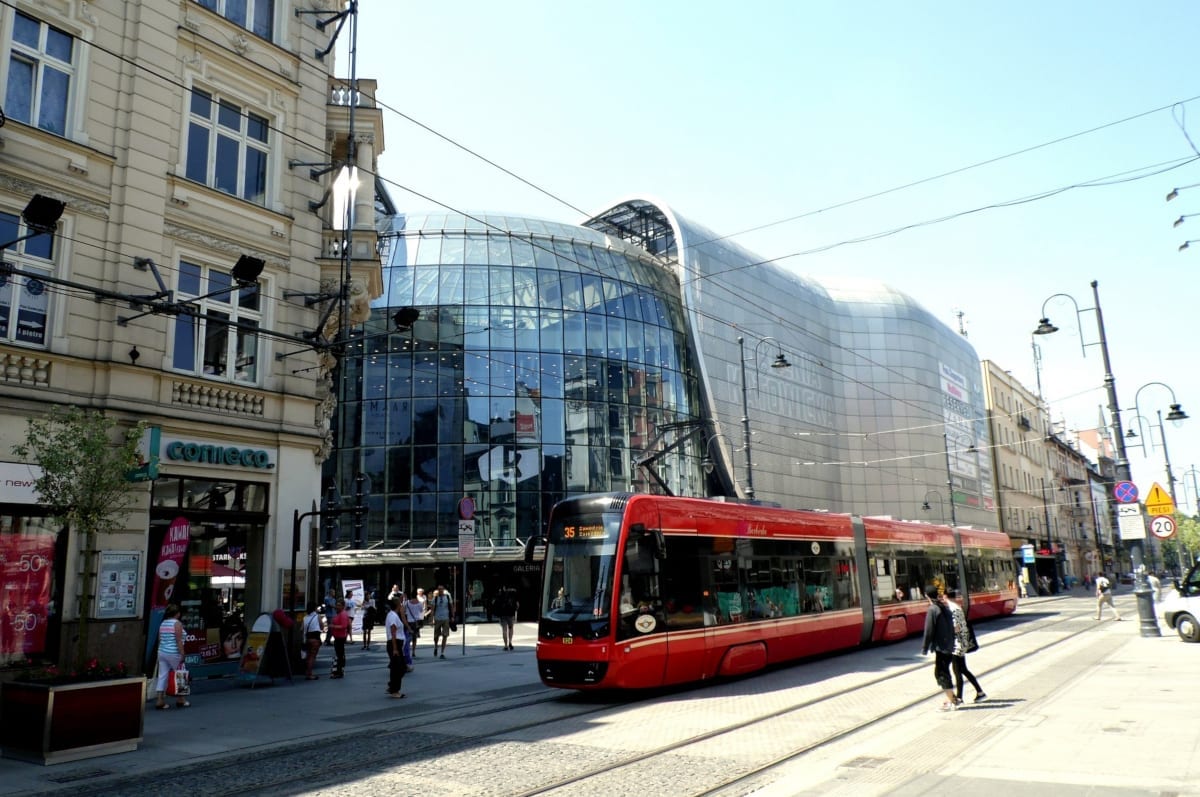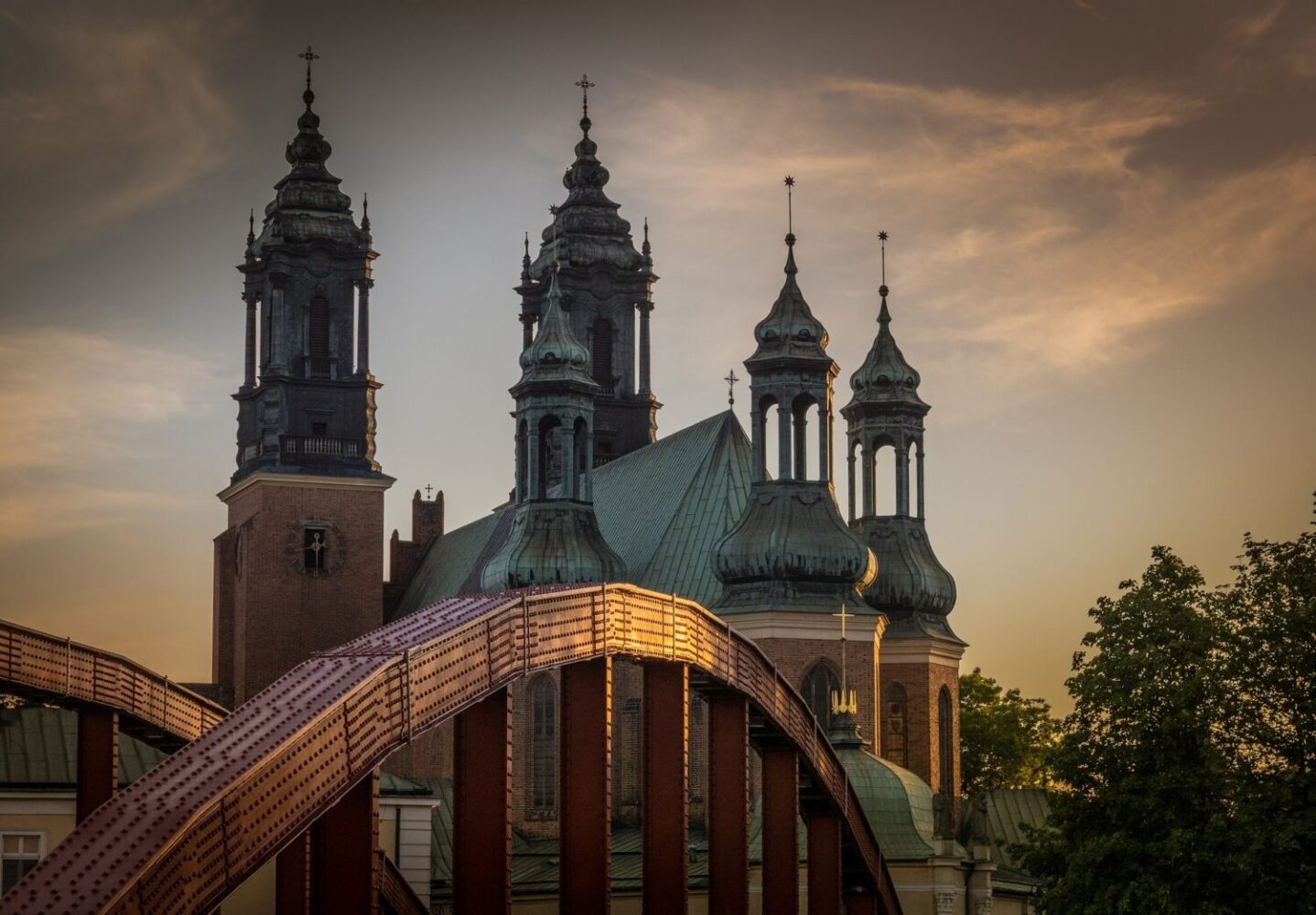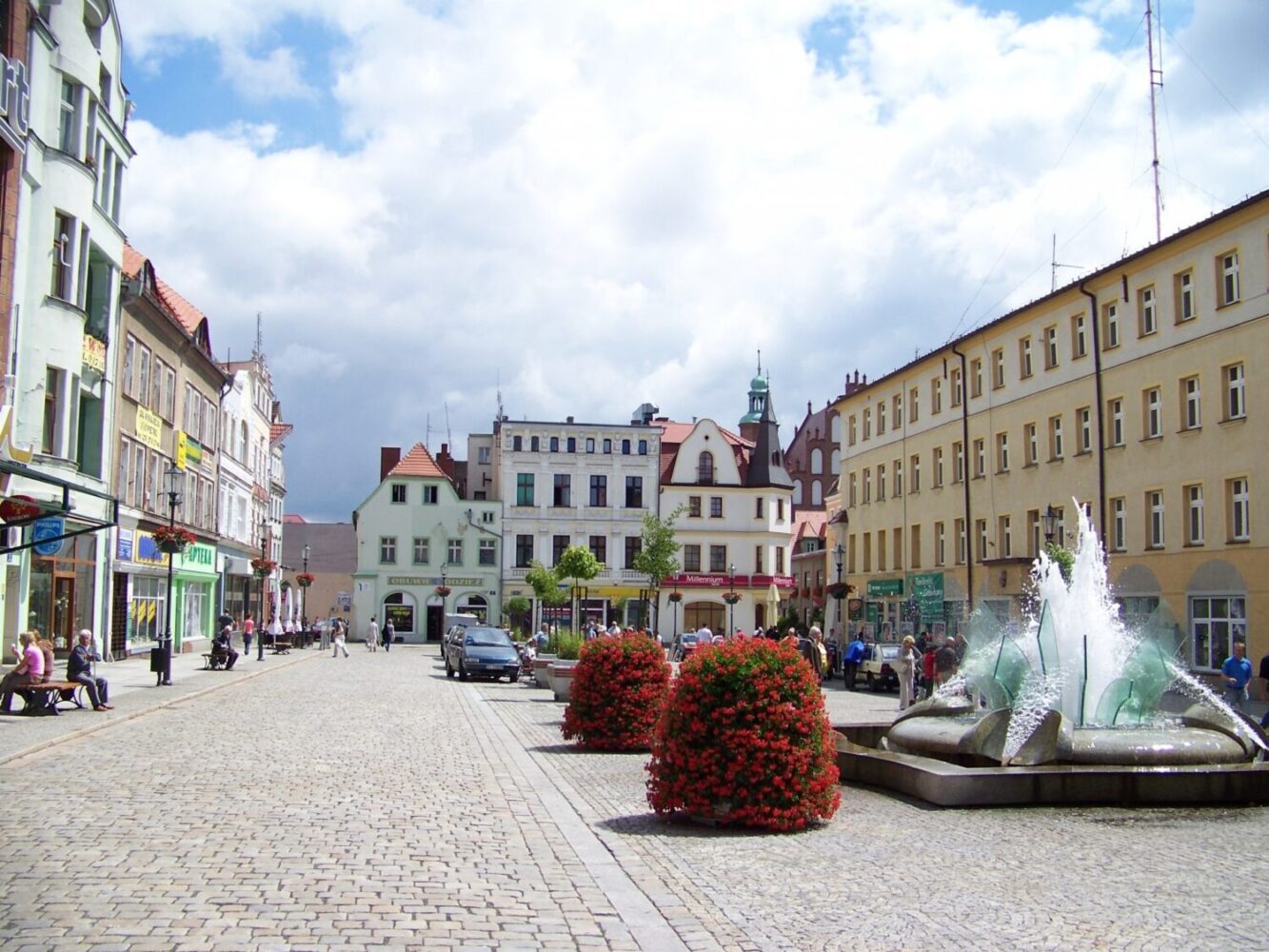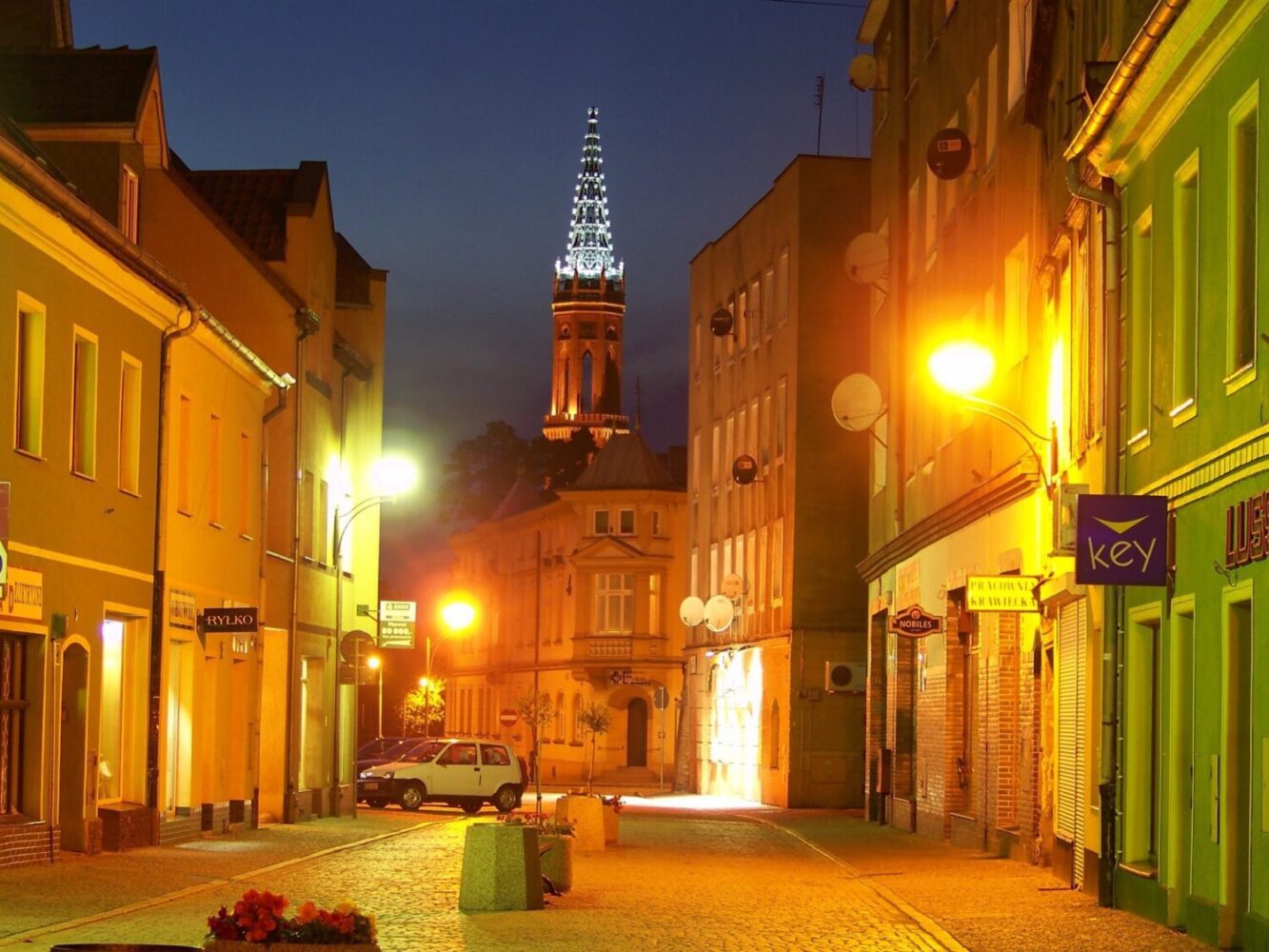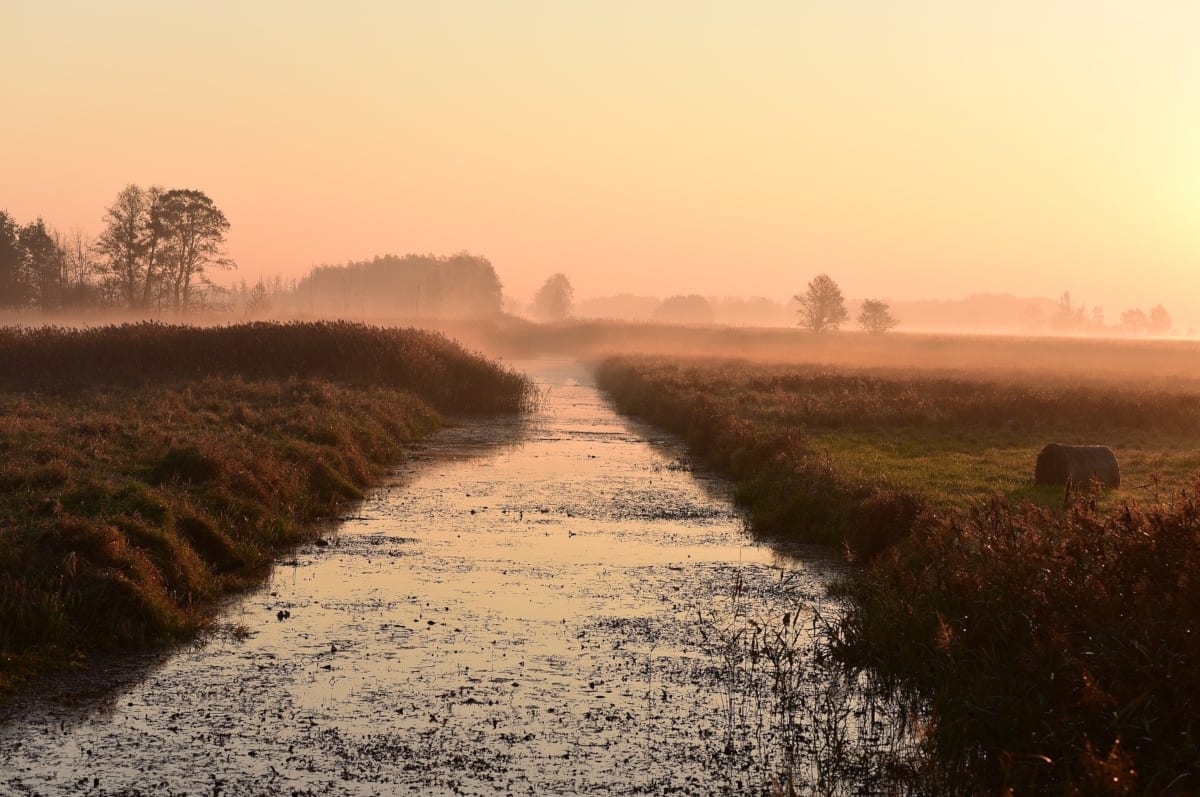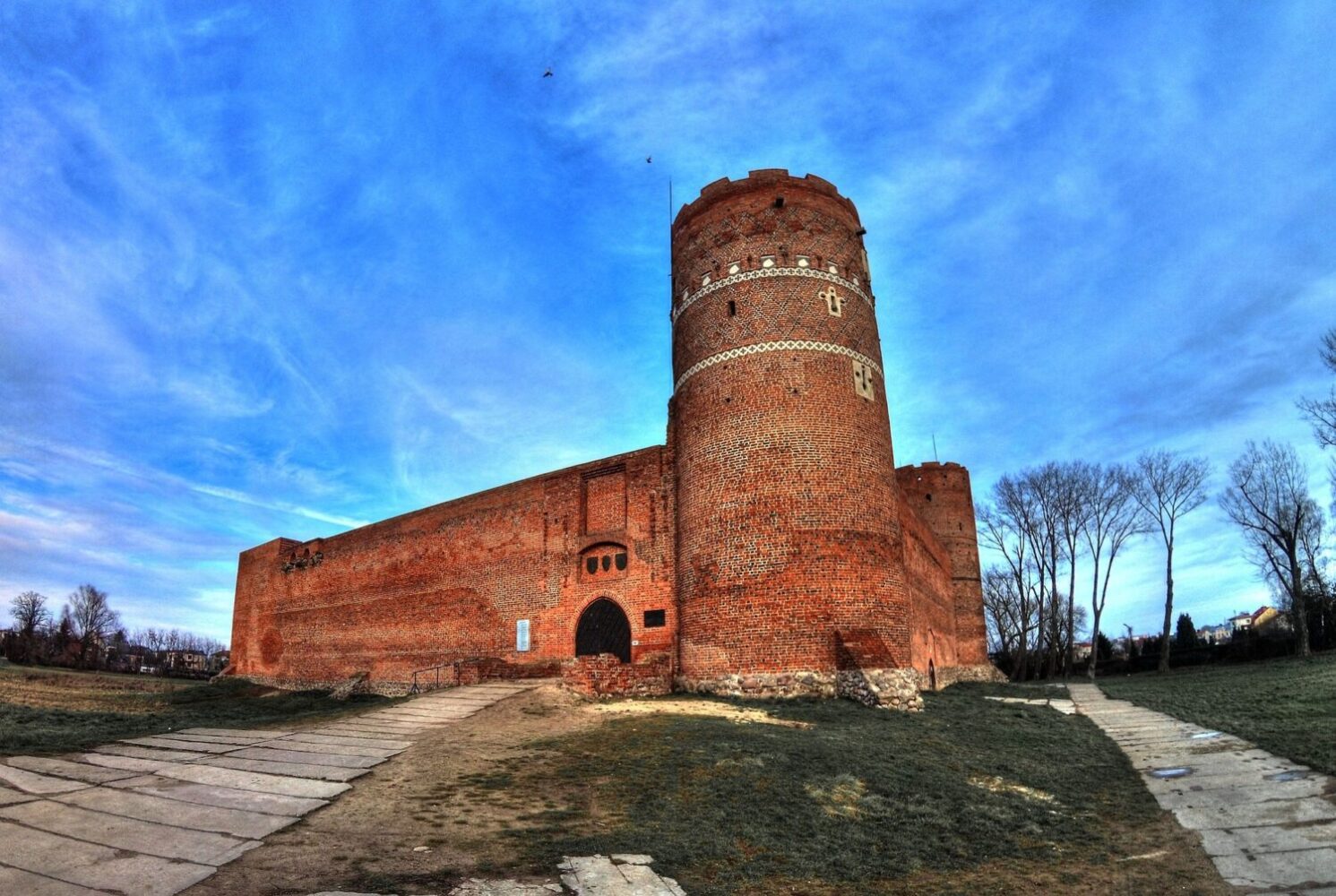Chapter 4 – Zakopane & masala farts
This post is part of a series of posts following the adventures of a man on a mission to explore 20 countries around Europe on a motorcycle – go to One for the road.
Chapter 4
The road between Krakow and Zakopane is undergoing massive works, so it’s endless adverts and diesel fumes and 60km before I can do 80kph. We pass through a patch of cut-grass smell, and then there’s two pretty girls hitch-hiking northwards, something I’ve not seen in Britain for decades.
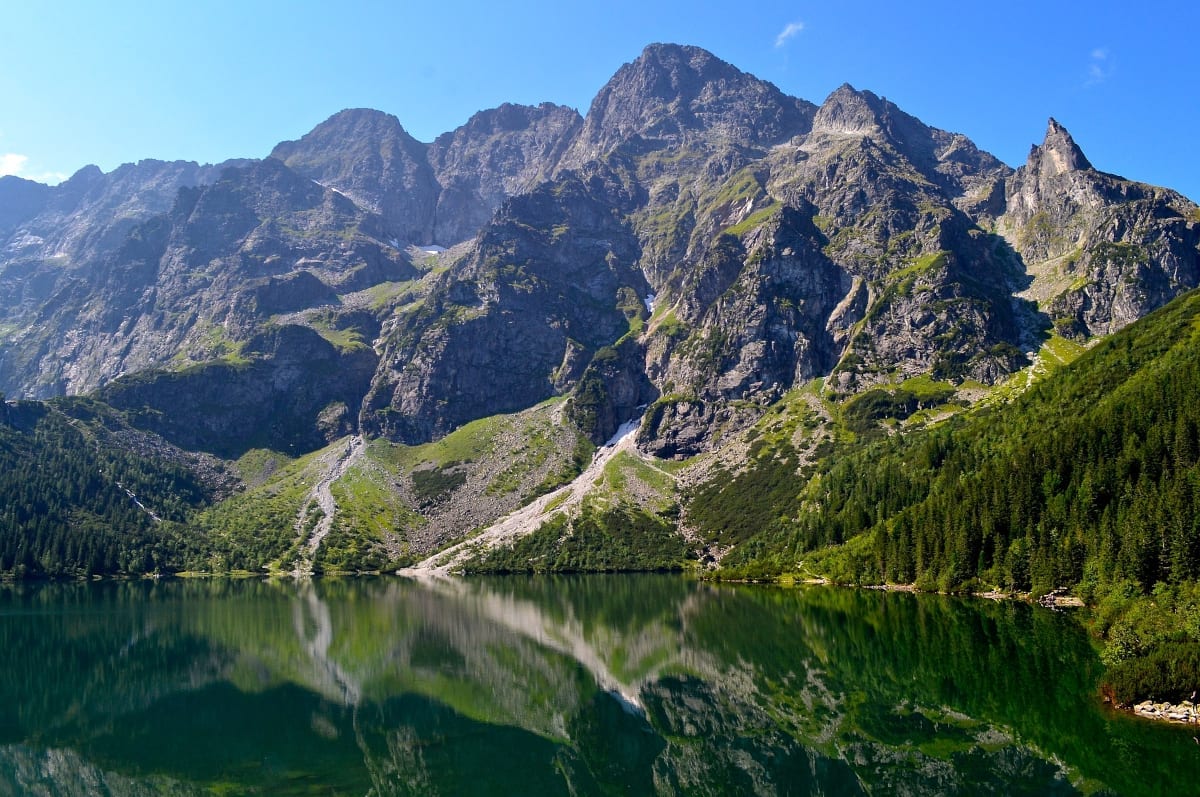
Alpiney
Mile after mile of green sprinkled and banded by bright yellow dandelions, and roadside stalls selling goatskin and sheepskin rugs begin to appear. A young girl stands in the middle of a field with her cow and blonde ponytail and slim blue jeans. Three hours later, it all becomes alpiney, with log cabins and big advertising hoardings, mostly for rooms.
Getting somewhere
When the Tatry finally appear through the spring haze, an unbroken line that fills the horizon, their sides and cols streaked with snow, I stop for petrol, then climb over a wooden fence to sit on a grassy bank and revel in the sun. A light plane rocks and crabs, swaying in the wind, and I sit and watch some kind of bird of prey rise in broad circles in a thermal, up and up without moving its wings. A thousand metres away, a shepherd descends the slope with a spread of sheep as densely white as spilt milk.
I begin to feel that I am getting somewhere.
Zakopane
It’s not much further on that the houses begin to grow steep roofs, with little wire fences running along the gutter to hold the snow back when it comes, and then we cruise into the outskirts of Zakopane, past a McDonald’s and a Tesco’s. I ride the streets for a while, looking for a suitable room, before remembering that I am a YHA member.
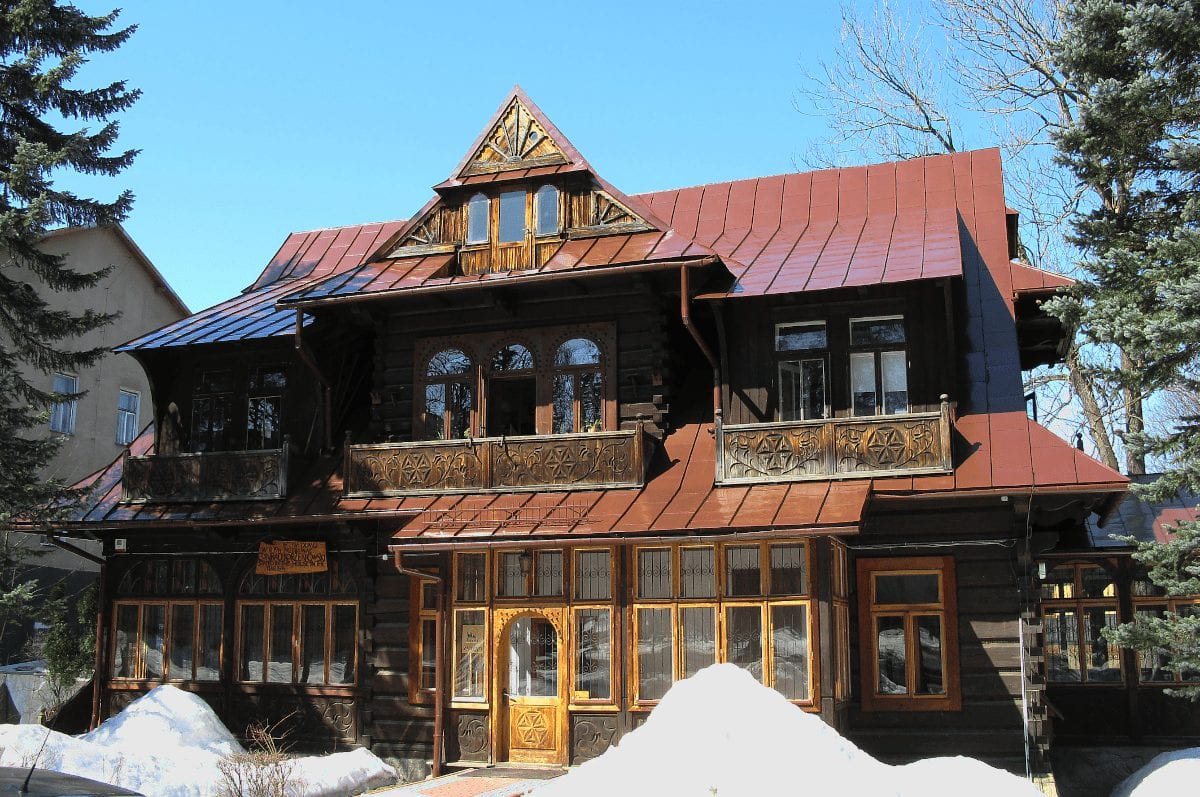
I almost immediately find the sign at the top of a drive, about fifty yards down which a red and white bar bars the way. There’s an intercom machine on a post, and when I lean across and ask it if this is the way to the YHA there is a resounding “NIE!”, but just as I’m wondering what to do next the bar lifts, and we roll on down.
Wellington boots
I park the bike and walk round to the front of a large, newish building, and up the stairs to the reception area, where I ask a young man about rooms. He just looks blankly at me, so look around for help and see another young man, dressed all in black, with heavy-duty Wellington boots. Then I realise they all are, but for some reason this doesn’t stop me asking him if there are any free rooms, and he says no, because this is the Fire Station. The hostel is back up the drive, right by the big sign that says YHA.
Bike problems
The bike starts immediately and just as immediately dies and won’t re-start. Sighing, I take the tank bag off and trudge up to the large hostel, and am given a bed in Room 782, which has four other beds, then go back down to the bike, which now condescends to start, but misses when I turn the handlebars, indicating an electrical problem, which after a lot of pinching and tweaking, I narrow down to a bend in the cable near the steering yoke. I squeeze hard, and the lights come on. I let go. They go out. I slit the sheath and at once see the tiny, fine green of corroded copper.
I take a four-inch length of surplus extra wire (at least I hope it’s surplus) from inside the headlight cowl, splice it in and press the starter button. The engine starts instantly. Now all I need is the insulation tape that has been in the tool box for the last year but strangely now isn’t.
It’s a Kind of Magic
I make a wide detour of a couple of very weathered old men in baseball caps and very loud sweaters, bottle in hand, dancing a jig on the pavement, and go in to a bar, to find all rustic pine and many locals whiling away the lunchtime. Pop music, table football, ancient skis, cowbells, china beer mugs, the sort of lanterns you use on dark snowy nights with your horse-drawn sleigh. The jukebox plays Queen’s It’s a Kind of Magic, while outside farmers sit beneath parasols and drink beer and four goats and a sheep graze.
People clump to and fro across the bare wooden floor. A middle-aged university professor-looking type of bloke wins nothing during the time it takes me to drink two beers. As I leave, he moves onto the next machine and starts again.
It’s only a short walk into town, and as I leave the bar a horse-drawn cart, like a huge cattle trough with a lorry wheel at each corner, rumbles past, identical to the ones still so common in Romania. Although Zakopane is Poland’s premier ski resort and hiking centre, it’s actually quite a small town which has grown from being a very small village which in the 17th century served the local mining and metallergy industries, but now serves the tourists, who, attracted by the unique food, architecture, music, and costume of goral culture, now annually outnumber the inhabitants ten to one.
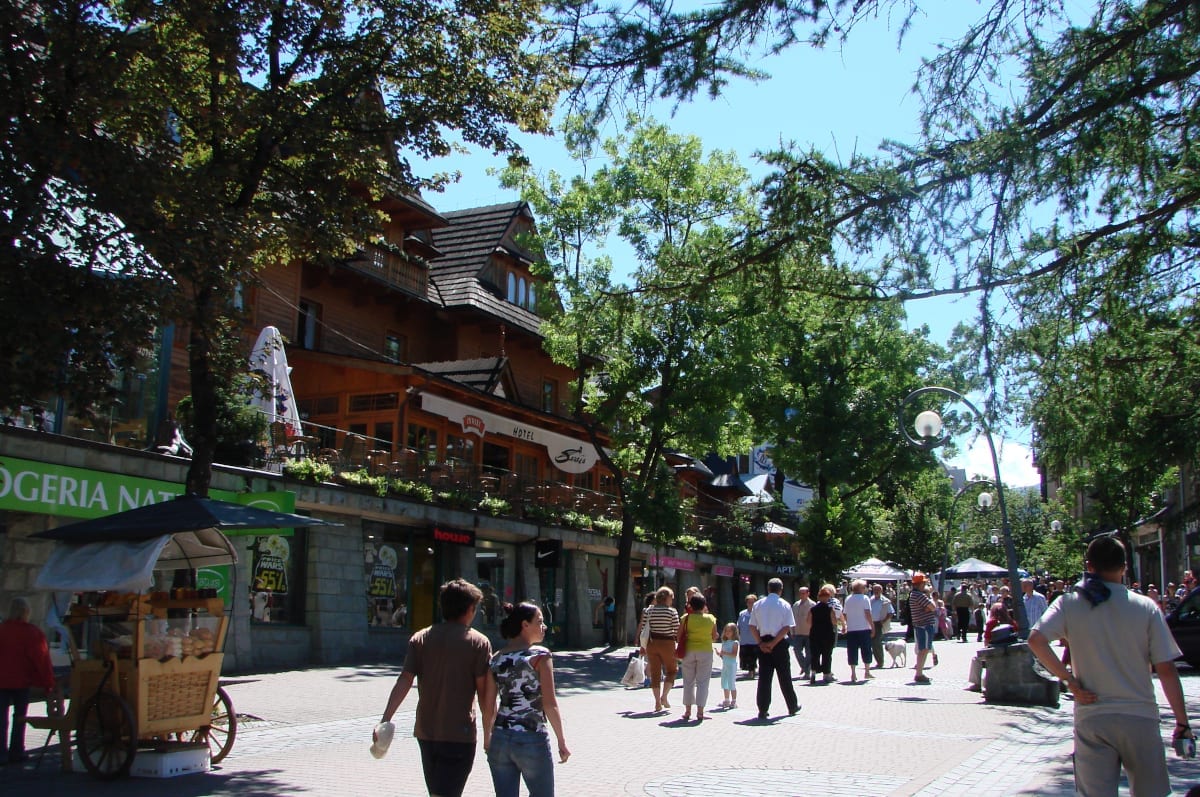
Krupówki
The town spreads out very clearly from the junction between just two streets, the main one of which, Krupówki, is a steeply sloped thoroughfare lined throughout with souvenirs shops, restaurants, horse-drawn rides in carriages in summer and sleighs in winter, and the street performers found in any European resort.
Bloody Yanks!
I find an internet café and pay some nominal sum for half an hour’s use. The young American couple using the console next to me are absolutely typical of their type; flawless and tanned skin in which frank and friendly eyes and big white teeth shine whitely, and both have heavy, glossy hair. They wear chunky and sensible clothes, and open sandals.
They speak with that penetrating American confidence that truly unaware people have, loud enough for everyone in the room to hear. Within five minutes he gets up to go and find the guy who runs the place. “Excuse me,” he drawls audibly from the reception hall, with a voice that glows with the warmth of a Texan evening, “but is it possible to get Windows in English?” Typical brash Yank behaviour, is my inescapable reaction.
I don’t hear the reply, but when he comes back to his seat, sits down and reaches for his mouse, his sleeve falls back, revealing the bright red plastic band round his wrist, one of those things that everybody from presidents to fifteen-year old schoolgirls wears to show how much they care about whatever the current must-have bleeding heart must support.
And I read, repeated all the way round it, interspersed with the shape of a maple leaf, the word CANADA.
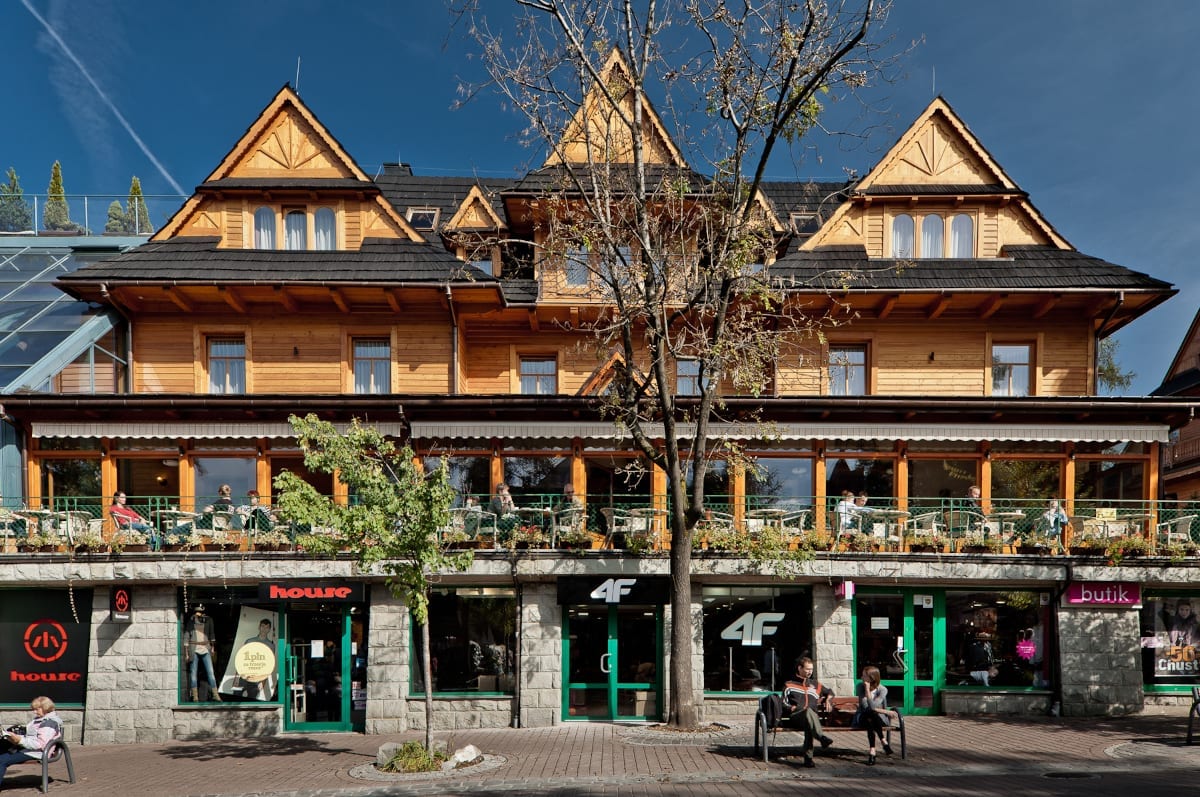
Local architecture
Zakopane has a specific style of architecture based on the motifs and traditions of the Carpathian Mountains, which is exploited throughout the town, along the back streets of which I stroll in order to work up an appetite for an early supper. Some could be used by Hollywood for horror films requiring ramshackle timber buildings with steepled towers, flapping shutters, leafless trees and lightning crackling in the background, while others are simply lovely ancient dwellings; the new ones have been built with enormous orange pine logs of a kind you’d never see in Britain, and roofed with sheets of shining tin. Plastic goats, rabbits, gnomes, storks are popular garden ornaments, and everywhere there is the sound of lawn mowers at work.
After a delicious meal as the only customer in a huge and echoingly deserted Chinese restaurant, I return to the hostel, where I find arranging her possessions on one of the beds in Room 782 the most beautiful young lady I have seen for two days: a halo of fine flaxon hair around an open, broad-cheeked face with blue eyes and a smiley mouth.
00ps7
Suzi is Austrian, and when she hears that I’m English, her eyes light up. “Ooh, you’re English! I just love your English accent, and English gentlemen are sooo sexy you’re motorcycling alone through Europe wow that’s so cool I just love James Bond I’ll be here for a few days I’m going out for dinner now but see you tomorrow don’t leave without me byee!”
I go to bed with a light heart.
At some point during the night, I surface briefly and the aloo baingan masala I had for supper blatters forth in the longest and most stentorian fart I have heard in my life, which just goes on and on out into the darkness, before I snuggle back into sleep.
It is six when I wake from my early night, and I remember the conversation with Suzi and my heart lifts again and I raise my head to see if she’s also awake – is it too early to suggest going into town for breakfast?
Her bed is empty. I sit up and look around. Her shelves are empty, her pack gone. I dress and go down to Reception, where I ask the boy on duty if the Austrian girl changed her room last night.
“No,” he says. “Miss Weiss checked out an hour ago.”
“She didn’t say where she was going?”
“No,” he says again. “She seemed to be in a big hurry.”
Sadly, James Bond climbs back up to his room.
Motorcycle Rental
